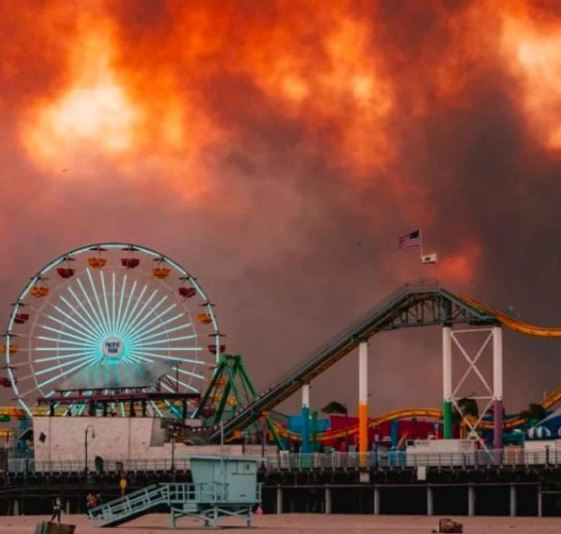When wildfires broke out earlier this year, Mara Dias, water quality manager for the Surfrider Foundation, an environmental nonprofit, immediately worried about the ocean. Strong winds carried smoke and ash far beyond the fire zones, depositing them into the sea. Scientists aboard a research vessel during the fires confirmed this, detecting ash and debris as far as 100 miles offshore. Julie Dinasquet, a marine ecologist from UC San Diego’s Scripps Institution of Oceanography, described the scene: “We found twigs, shards, and waste in the water. It smelled like burning electronics—not a pleasant campfire.”
Rainfall and Runoff Amplify the Problem
Heavy rainfall following the fires has compounded the issue. As water flows through drains and rivers toward the ocean, it picks up contaminants, including nutrients like nitrogen and phosphate from burned materials, as well as heavy metals and polycyclic aromatic hydrocarbons (PAHs)—toxic compounds released from burning fuels. “This runoff carries a lot of hazardous substances into the water,” Dias explained.
Also Read: Gold Mine Collapse in Western Mali Kills 48, Mostly Women
Mudslides and debris flows, particularly in the Palisades Fire burn zone, pose an additional threat. Burned soil, less able to absorb water due to a water-repellent layer formed from seared organic material, increases the risk of landslides. With less vegetation to stabilize the soil, mudslides can carry hazardous waste directly into the ocean.
County Response and Mitigation Efforts
Los Angeles County officials, in collaboration with other agencies, have deployed thousands of feet of concrete barriers, sandbags, and silt socks to prevent debris from reaching beaches. The LA County Board of Supervisors recently passed a motion requesting state and federal assistance to expand beach cleanups, prepare for storm runoff, and test ocean water for toxins and chemicals.
State water officials are conducting extensive testing, analyzing samples for metals like arsenic, lead, and aluminum, as well as volatile organic compounds, microplastics, PAHs, and polychlorinated biphenyls (PCBs)—man-made chemicals linked to cancer and other health issues. While chemical tests from last month showed no immediate health concerns, leading to a downgrade of one beach closure to an advisory, officials still recommend avoiding the water.
Long-Term Ecological Risks
Researchers, including Dinasquet, are studying how far toxic ash and debris have spread across the ocean, how quickly they sink, and where they ultimately settle. While forest fires can deposit beneficial nutrients like iron and nitrogen, boosting phytoplankton growth and supporting marine ecosystems, urban coastal fires like those in LA pose unique risks. “Reports show high levels of lead and asbestos in the ash,” Dinasquet said. “This is harmful to humans and likely very bad for marine life too.”
A major concern is whether these contaminants will enter the food chain. Scientists plan to test fish tissue for heavy metals and other toxins, though understanding the full impact of such a massive urban fire on the ecosystem and food supply will take time.
A Compounding Crisis
Dias emphasized that the ocean has long absorbed land-based pollution, but events like wildfires, mudslides, and atmospheric rivers are making the situation worse. “Everything is compounded, and the situation is even more dire,” she said.
As Los Angeles grapples with the aftermath of these disasters, officials and scientists continue to monitor the situation, working to mitigate immediate risks while studying the long-term consequences for both the environment and public health.



